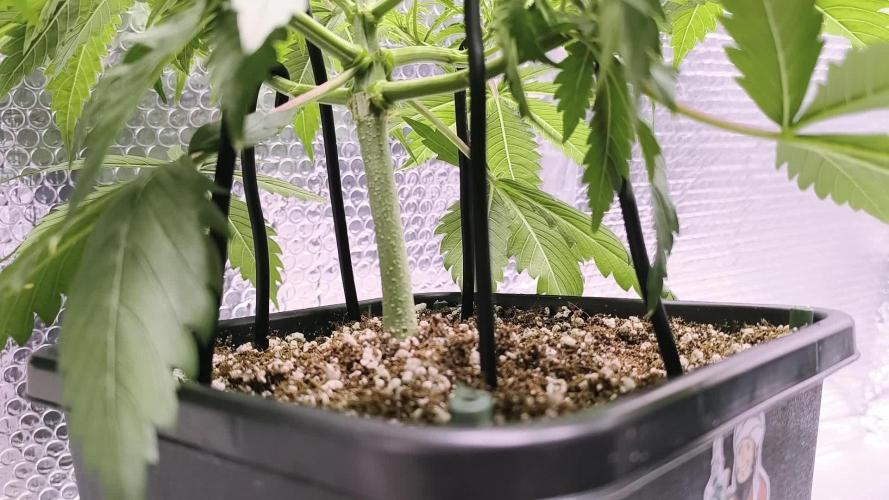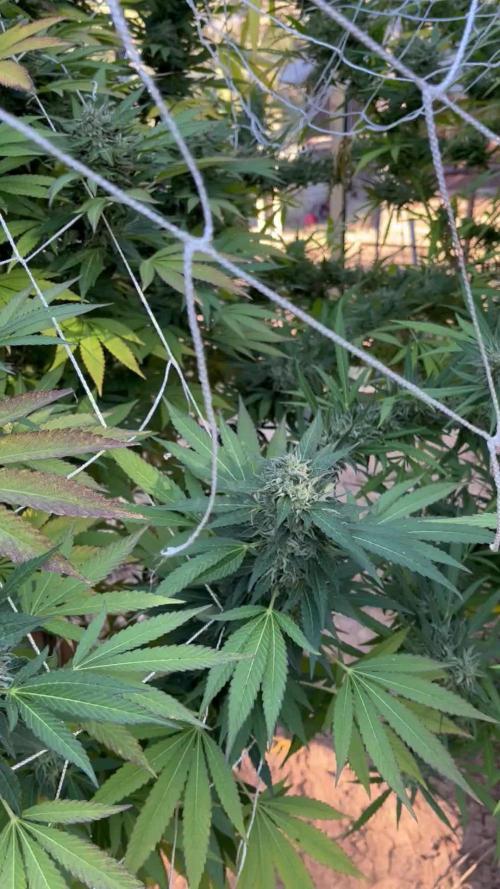The Grow Awards 2026 🏆 



































Likes
Comments
Share


@LegacyMarketFarm
Follow
Make sure to head over to Mars Hydro for all your tent's & lights. Use our affiliate link & help support Legacy Market Farm! Grow along with us, With the same seeds, Same gear!
GROW TENTS,LIGHTS,EQUIPMENT - https://www.mars-hydro.com/?acc=acc9612d3092b5bf3c8fe8008d350a83
SEEDS - https://www.seedsman.com?a_aid=6238a5998a68a
Need nutrients ? Grab some Green Planet & Grow along just like Legacy Market Farm ! Use our coupon code for 10% off!
https://greenplanetnutrients.ca/
COUPON : legacymarketfarm10
This was the state of the plants & Grow when I was hired to take over as onsite manager & Assistant master grower, This was our first week on site.
NOTE : This is only partial information regarding our nutrient recipe. We use a very guarded feed that was taught to us by the master grower of this facility that apprenticed me. Stay tuned to our youtube channel coming soon for lots of videos & tutorials to grow like a pro.
Check out videos of this crop & our tutorial series on our youtube channel make sure to subscribe!
https://www.youtube.com/channel/UCR89iF2Iqy3zlHZhFfU2MMg
Processing
Likes
11
Share


@Grow_Pro_031
Follow
Very basic start, had a small issue with the RH but rectified it quite quickly.
Processing
Likes
17
Share


@CANATURTLE
Follow
3.5 weeks from seed not 4, wanted to provide an update to the other topping and fimming pics you can see them taking off! fed once, not alot but i suggest not feeding with miracle grow its rediculous soil... and i suggest 40% perlite really its arguable but both are great drainers are provide lots of oxygen flow
im not pro but this isnt my first time,
update: they are exactly 1 month from seed today, check the updates,
fed promix rooting hormones on transplant
Likes
43
Share


@TheCannaProphet
Follow
~Entry for the 'Best Rarest & Smallest Pot by Seedsman' contest~
Starring 🤩....
~ Seedsman Zkittlez Auto ~
Zkittlez (Grape x Grape Apple) Auto x Auto Fruit (Auto Fruit Cheese x Auto Blueberry)
Zkittlez Auto is one of the very sweetest-tasting auto strains available anywhere. It is a sativa-dominant (60%) strain that was bred from Zkittlez (Grape x Grape Apple) Auto crossed with a male Fruit Kush Auto, the latter a remarkable fruity strain bred from Fruit Cheese Auto and Blueberry Auto. Growers can expect to harvest some good yields of high-THC buds.
Zkittlez Auto remains a fairly short plant, rarely exceeding 120 cm. in height wherever it is grown. This is a vigorous plant which is able to metabolize a high level of nutrients and she's a thirsty girl too! If growing indoors close to neighbors it is strongly advised to ensure good and effective carbon air-filtration in order to neutralize powerful odors. This strain's life-cycle is approximately 90 days from seed to harvest.
The leaves on this plant are big and wide serving to convert every lumen available into Zkittlez goodness. Indoor growers should obtain between 400 - 500 gr/m2 while plants cultivated outdoors will produce slightly more at 500 - 600 gr/m2. Lateral branching is very good and it is recommended to use supports/ties to prevent snapping and keep buds close to the light source.
This strain's scent is sweet and fruity with candy and berry notes. Its high-THC has been measured at between 21 - 24% with less than 1% CBD. The effect is well-balanced, cerebral and euphoric, and is very good for social situations as well as for relaxing in front of the TV either alone or with company. It also has the added effect of helping to relieve chronic pain, helping with nausea, insomnia and depression as well as stimulating the appetite.**
**Credit to Seedsman.com
________________________________________________________________________________________________________________________________________________________________________________________________________________________________________________________________________________________________________________________________________________________________________________________________________________________________________________________
~ The Setup ~
~ Grown in a 2qt plastic popcorn pot filled with Mother Earth Grow 70/30 Coco/Perlite with Xtreme Gardening Mykos added.
~ Seed was germinated directly in the medium without any 'pre-soak'
~ Feeding will be by Dutch Pro Nutrients
~ 24hr light cycle while germinating
~ 20/4 light cycle after first leaves appear.
~ 4x8 Gorilla Tent
~ HLG 650R w/ 30w Supplemental UVA Bar controlled by a Trolmaster Hydro X controller set for a 15min Sunrise/Sunset simulation. (also a HLG Blackbird for additional side lighting if necessary)
~ Supplemental co2 controlled by an AutoPilot APC 8200 co2 controller
~ AC Infinity Cloudline T6 with Controller 67 using a Terrabloom 6x24" carbon filter
~ De-Humidifier and Humidifier when needed.
~ 14k BTU IdealAir portable A/C unit plumbed into tent for temperature control.
~ BlueLab testing instruments
~ Two Hurricane 18" oscillating fans
~ Two 6" Clip-on fans
~ Two 10" floor mounted fans
________________________________________________________________________________________________________________________________________________________________________________________________________________________________________________________________________________________________________________________________________________________________________________________________________________________________________________________
Weekly Update:
11/15- Well here we go into the Seedsman Zkittlez Auto's second week of life since she popped out of her medium, and I must say she's looking super fine! ❤️
Today I watered/fed her with 16oz of well water with a base ppm of 100, to which was added the following Dutch Pro nutrients: Grow 'A' & 'B' @ 10ml/g, Multi Total @ 7.6 ml/g, Take Root @ 3.8 ml/g, Silica Von Liebig’s Special @ 1.2 ml/g along with Earth Juice's Oily Can @ 5 ml/g to end up with a total 850ppm nutrient solution. After adding the nutrients and checking the EC, I ph'd the solution to 6.1 @ 74℉
11/17- I skipped watering as her pot still had some weight to it and she was 'praying' hard showing no signs of being thirsty.
11/19- Yesterday the Zkittlez Auto still looked perky so I decided to wait another day to water/feed her. I did decide since she's in such a small pot to go ahead and top her today. Her fifth leaf set was just emerging so that is what I removed. Now, she'll not grow quite as tall and will train into a beautiful looking lady!😍👍
Today her leaves were just starting to show signs of drooping and her pot was light so I went ahead and watered/fed her with 0.25g of well water with a base ppm of 100 that I allowed the excess to drain to waste. To the well water I added the following Dutch Pro nutrients: Grow 'A' & 'B' @ 10ml/g, Multi Total @ 7.6 ml/g, Take Root @ 3.8 ml/g, Silica Von Liebig’s Special @ 1.2 ml/g along with Earth Juice's Oily Can @ 5 ml/g to end up with a total 800ppm nutrient solution. After adding the nutrients and checking the EC, I ph'd the solution to 6.1 @ 74℉.
11/21- I skipped watering today as she was still pretty moist (the plastic 'popcorn bucket' doesn't breath like a fabric pot) and I don't want her roots to get too wet so I'll wait until tomorrow and check her again.
The Zkittlez Auto reacted really well to her topping and has new shoots emerging from the site . Her color and vigor remain great and she's really starting to get going now! ❤️❤️❤️
~ Thank you from the bottom of my heart for following my grows and for all the ❤️and support you give! 💚What you grow - Grow what you💚
Likes
Comments
Share


@pHilosophy420
Follow
Day 35, She is growing well and started stretching . Another week LST and light defoliation.
Likes
18
Share


@Northfork
Follow
10-5-25 last week for the dos si dos 33 she is looking heavy and ripe going to pull her in the next couple of days. The rest of the girls still have a a week or two left.next week we will have a harvest.
Likes
20
Share


@Loucifer512
Follow
Ok so I did a drip system on these plants for about a couple weeks took it out now half the plants want to be watered more then usuall and if not they start to droop other then that it’s fine hopefully they will do better when they get transplanted to 5 gallon pots
Processing
Likes
4
Share


@matzouf
Follow
30/09
Still going strong, I'am not totally sure but looks like this plant is having a slight mite invasion again despites the neem and potassic soap treatment.
Likes
18
Share


@lino06000
Follow
la petite n'en finit plus de grossir elle a une odeur très forte et deviens toute blanche que du bonheur
11/10 la belle et a l'eau depuis 3 arrosages les tricholomes ont bientôt atteint leur summum de ce que j envois au microscope et si je m en refaire au livre de Jorge Cervantes .les dernières photos sont prises avec flash au naturelles ont vois plus de 85 a 90 pourcent de poil ambre
Likes
102
Share


@Aleks555
Follow
Hello, friends! The week went well. On December 17, 2023, we switched the light to 12/12, and our girls are enjoying it, consuming a good 2000 ppm every day. I want to share that the clones are doing well too; they are two weeks old. Thanks to everyone for keeping track of our growth and leaving comments; it means a lot to me.
Likes
6
Share


@SilverEdge
Follow
Moving right along - the buds are starting to really fatten up and look hella juicy.... Was having a hard time keeping there humidity low - so I sprung for a small dehumidifier. Seems to be doing the trick.
Very excited to go into there last month of flower!
Likes
11
Share


@ILoVeThiSpLaNt
Follow
Day 7
Le piante sono nate e tutte e stanno bene.
Aggiunto un po' di terra diatomacea vicino al tronco perché ho notato che gli insetti che ho sempre nel box (tripidi) salgono proprio da questo punto e la situazione sembra migliorare.
Ogni 10gg per tutta la fase vegetativa userò Zeolite (5gr x litro) per via fogliare. Si macchie ranno un po' le foglie ma questo creerà una patina su di esse così da proteggerle da stress di calore e sbalzi termici. Protegge da malattie fungine (peronospora e botrite) e preserva le superfici da attacchi di patogeni, muffe saprofitarie e batteri.
A settimana prossima 😊
Processing
Likes
15
Share


@WighLowBeanz
Follow
She'll be 7 weeks Friday and today is Wednesday July 15th. Her buds are as round as a baseball! Some are 6 inches long and she is full of resin and sticky as hell!
Likes
9
Share


@Nebula
Follow
Continuing LST and FIMING, was gone for a week so they were hungry. Alternated a few days later with boogie brew. Topped a few times ans really getting a flat bushy canopy. Excited to see the yield on this pretty lady.
Likes
11
Share


@pegonter
Follow
Beginning of week 7 plants faced a severe heat and dryness wave reaching 26°C and 35%hr however irrigation time (and volume) were fast adjusted and the problem was solved. Plants didn't got affected by that as seen.
One of 3 early skunks presenting yellowing on leaves and will be chopped soon. Other 2 might wait some more days.
Likes
68
Share


@Ferenc
Follow
Day 50, 5th of November 2020:
Fucking hell in the second video i just broke the tray LOL....
Anyways... The lamp has been switchet to 12/12 for 4 days from now she is streching and has a nice smell :)
No training needed just waiting....
Fertilization happens more often like every 2nd day and more of the BioBizz family raised up to be 2ml/L haha ;)
Bye.
Likes
6
Share


@Terpio1500
Follow
Week 2
I got Pistils showing
The New
Check out my other Dairies (Gelato Cake & The New)
Nutrients (floraflex) are in Grams/gal*
Light: HLG
Follow my IG @therealterpio for more updates & content!
I tend to low feed the first 2 weeks then ramp it up a little later into flower
Likes
42
Share


@JohnDee
Follow
Hello all, some pistils are turning brown, a quick google search tells me it could be 3 things
1-Light heat
2-Herm
3-Nutrient burn
I would appreciate any opinions
Happy growing



























